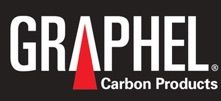Reducing Sinker and Wire EDM Consumable Costs

A key area for improvement in EDM operations is the reduction of consumables. New technologies, machine settings and improved material grade limit ram or sinker EDM electrode wear to 0.1% while maintaining productive machining speeds. For wire EDM, new low-consumption technologies reduce the biggest expense—the wire itself—by as much as 50 percent.
With all EDM machines you experience the benefits of designing and cutting complex shapes and tapered holes with hard metals. You can depend that the machine has the capacity to cut exactly what you want.
Sinker EDM machines use an electrode and workpiece submerged in liquids such as oil or dielectric water. A power supply is connected to the electrode and generates electrical potential between both of the parts, producing a breakdown to form a plasma channel and spark jumps. The sparks initiated by the power supply often times strike one another.
In the sinker EDM process, wear on the electrode starts as soon as the erosion process begins. As metal is burned away on the workpiece, the electrode gradually experiences wear and loses it’s fine details and is dimensionally changed. Minimizing electrode wear is not only critical to reducing costs and lead times, but also improving part accuracy.
From a general sinker EDM perspective, quality graphite electrode materials provide the most productive machining speed. The wear rate of a graphite electrode depends largely on the size of the detail, the electrode reduction amount, and the power settings used. But the grade of the graphite is a contributing factor. Using the correct grade of graphite will limit wear and rate of erosion.
Wire electrical discharge machining uses a single string of thin metal wire to cut thick metals for precise incisions and splits. Similar to Sinker EDM, Wire EDM uses an electrode and spark to cut metal. Using a spark erosion technique, Wire EDM machining submerges the part being cut in deionized water and the wire acts as the electrode, creating a spark that roughs or skims the part into the desired shape without the wire ever coming in contact with the part.
The price of a wire EDM machine is minimal when compared to the cost of the wire over the life expectancy of the machine. Excessive wire consumption on a wire electrical discharge machine is costly. Technology that allows slower unspooling speeds without compromising results appears to be the answer. Wire is the single highest expense in operating a wire EDM. With even the least expensive EDM wire running $5 to $6 per pound, investing in low-wire consumption EDM machines appears to be the answer.
A key area for improvement in EDM operations is the reduction of consumables. For Sinker EDM users, consider using better grades of quality materials to reduce cost. For Wire EDM users, consider investing in new technology with machine settings that reduce the amount of wire used.





